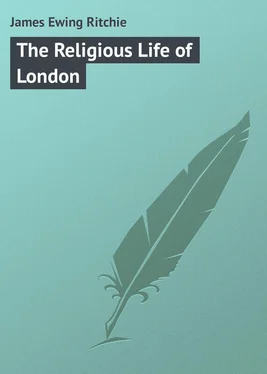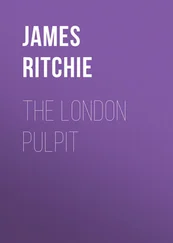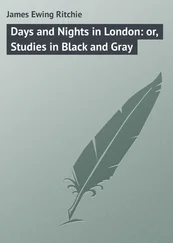James Ritchie - The Religious Life of London
Здесь есть возможность читать онлайн «James Ritchie - The Religious Life of London» — ознакомительный отрывок электронной книги совершенно бесплатно, а после прочтения отрывка купить полную версию. В некоторых случаях можно слушать аудио, скачать через торрент в формате fb2 и присутствует краткое содержание. Жанр: foreign_prose, на английском языке. Описание произведения, (предисловие) а так же отзывы посетителей доступны на портале библиотеки ЛибКат.
- Название:The Religious Life of London
- Автор:
- Жанр:
- Год:неизвестен
- ISBN:нет данных
- Рейтинг книги:3 / 5. Голосов: 1
-
Избранное:Добавить в избранное
- Отзывы:
-
Ваша оценка:
- 60
- 1
- 2
- 3
- 4
- 5
The Religious Life of London: краткое содержание, описание и аннотация
Предлагаем к чтению аннотацию, описание, краткое содержание или предисловие (зависит от того, что написал сам автор книги «The Religious Life of London»). Если вы не нашли необходимую информацию о книге — напишите в комментариях, мы постараемся отыскать её.
The Religious Life of London — читать онлайн ознакомительный отрывок
Ниже представлен текст книги, разбитый по страницам. Система сохранения места последней прочитанной страницы, позволяет с удобством читать онлайн бесплатно книгу «The Religious Life of London», без необходимости каждый раз заново искать на чём Вы остановились. Поставьте закладку, и сможете в любой момент перейти на страницу, на которой закончили чтение.
Интервал:
Закладка:
CHAPTER V.
the roman catholics
If we may quote the Eastern Church, the Roman Catholic Church is the greatest heresy of modern times. In the Encyclic Epistle of the Eastern Patriarchs, the Papal system is referred to as “the chief heresy of the latter days, which flourishes now, as its predecessor, Arianism, flourished before it in the earlier ages, and which, like Arianism, shall in like manner be cast down and vanish away.” “I die in the faith of the Catholic Church before the disunion of East and West,” were the last words of Bishop Ken. Under the Stuarts, in solemn conclave the Anglicans accused the Romanists of idolatry. In the opinion, then, of the oldest Church, the only Church with an indisputable apostolical succession, and in the opinion of some of England’s greatest Churchmen, the Church of Rome is an heretical one. Such is the conclusion to which also we are driven by the very slightest historical inquiry. Lady Herbert wonders that an Anglican Churchman can go to Jerusalem and not become a Romanist. Why, as the priest takes you from one sacred station to another, shows you where the Saviour fainted beneath the load of the cross, where Saint Veronica wiped His face with her handkerchief, where the print of the Saviour’s foot yet remains, – when we all know that the Jerusalem of the Saviour’s time is some eighty feet below the surface, and that all these assertions are absolutely false, you feel indignant, and, if you have the smallest iota of intellect left, after listening to the priestly legends, return a considerably sounder Protestant than you went. In like manner, history leads you to a similar conclusion as to the Roman Church. History, with an impartial pen, tells us how the Roman heresy sprang up, and grew, and reigned in every land. History robs Romanism of all its terror and of all its power. We see it, with plain, unblinded eyes, to be a heresy gradually enlarging its claims in accordance with the increasing ambition of its prelates, and the increasing credulity of its devotees. Gradually, as the memory of apostolic teaching and preaching passed away, the Church of Rome, after the fall of Jerusalem, continued to advance among the western Churches certain vague assertions of authority. In proportion as its clergy asserted their claims, other changes of an unscriptural character were made. First of all, the doctrine of baptismal regeneration was asserted; then a mysterious veneration began to attach itself to the celebration of the Lord’s Supper; the sign of the cross was held to be vital to the expulsion of the devil; and prayers for the dead became common. A great step was gained when the doctrine of the celibacy of the clergy was enforced; when Gregory the Great, as the Romanists may well call him, inculcated purgatory, and pilgrimage to holy places; instituted the Canon of the Mass, and added splendour to the ceremonies of the Church, and claimed the power of the keys for the successors of St. Peter. On the foundation thus raised it was easy to base the most astounding claims; whether you are asked to believe that the Church of Loretto flew through the air from Syria to Italy, or, as in our time, the liquefaction of the blood of St. Januarius, and the immaculate conception of the Virgin. After a certain point gained, the rest is sure to follow. Give up the Bible, believe in the priest, and the Roman heresy is the natural result.
In the Catholic Directory I find the statistics of Romanism as it exists in London. The province of Westminster, established by his Holiness Pope Pius IX. (Bishop of Rome, Vicar of Jesus Christ, Successor of the Prince of the Apostles, Supreme Pontiff of the Universal Church, – such are a few of the titles he assumes), Sept. 29,1850, comprises the diocese of Westminster, with twelve suffragan dioceses. Westminster comprises Essex, Hertfordshire, and Middlesex, with, for Archbishop and Metropolitan, the Rev. Edward Henry Manning, elected and consecrated in 1865. In London also there is another Church dignitary, the Rev. Thomas Grant, Bishop of Southwark, elected and consecrated in 1851. The patron saints of the diocese of Westminster are “our blessed Lady, conceived without sin; St. Peter, Prince of the Apostles; St. Edward, King and Confessor.” In addition to the Virgin in Southwark, the patron saints are St. Thomas of Canterbury and St. Augustine. The ecclesiastical statistics of Westminster diocese are, priests – secular, regular, oratorians, oblates of St. Charles, and unattached, 221; public churches, chapels, and stations, 123; and the average attendance at the four schools of the diocese was, for 1866–67, 12,056. Of course this includes more than the London district; but then in Southwark diocese I find St. George’s Cathedral, and, besides, about thirty chapels or stations; and of the 160 priests in the diocese, we may reasonably conclude that a fourth are engaged in London and its suburbs. Last year thirty-eight secular clergy were ordained for England. Of these, thirteen were for the dioceses of Westminster and Southwark.
A correspondent of the Weekly Register , writing to show the increase of Catholicism in London during the last thirty years, points out that in 1839 there were in the metropolis and the suburbs the following Catholic churches: – St. Mary’s, Moorfields; St. Mary’s, Chelsea; the French Chapel, King Street, Portman Square; the Chapel of the Benedictine Convent at Hammersmith (now removed to Teignmouth, Devonshire); St. Mary’s, Kensington; St. Anselm’s, Lincoln’s Inn Fields; St. Patrick’s, Soho; St. Aloysius, Somers Town; St. James’s, Spanish Place, Manchester Square; and the Assumption, Warwick Street, Golden Square; in all ten churches or chapels. There are now, in addition to the above, St. Mary and the Angels, Bayswater; the new church at Bow; the Oratory, Brompton; St. Bridget, Baldwin’s Gardens; St. Joseph, Bunhill Row; the Servite Fathers, Chelsea; St. Peter’s, Clerkenwell; SS. Mary and Michael, Commercial Road; the Immaculate Conception, Farm Street; St. Thomas, Fulham; the German Church, Whitechapel; the church built by Sir George Bowyer, in Great Ormond Street; St. John the Baptist, Hackney; Holy Trinity, Brook Green; Nazareth House, Hammersmith; the chapel at Hampstead; the Dominicans’ Church, Haverstock Hill; the Passionist Church, Highgate; the Augustinians’ Church, Hoxton; the Sacred Heart, Holloway; St. John the Evangelist, Islington; the Italian Church, Hatton Wall; the Carmelite Church, Kensington; the church in Kentish Town; the church at Kilburn; Our Lady and St. Joseph, Kingsland; the new French Church, Leicester Square; the Rosary, Marylebone Road; St. Francis, Notting Hill; St. Charles, Ogle Street; the Polish Chapel, Gower Street; St. Mary’s, Poplar; the Holy Family, Saffron Hill; St. Anne’s, Spitalfields; Our Lady’s, St John’s Wood; St. Vincent de Paul, Stratford; the English Martyrs, Tower Hill; Our Lady of Grace, Turnham Green; St. Mary’s, Horseferry Road, Westminster; and SS. Peter and Edward, Palace Street, Westminster – in all forty churches or chapels in thirty years (without counting many private chapels or convents, &c.), or fifty chapels, where thirty years ago there were but ten. And it should be borne in mind that of the new churches many, such as the Oratory, Commercial Road, Farm Street, Islington, the Italian Church, Bayswater, Brook Green, St. John’s Wood, and others, are of a size and beauty which thirty years ago would have been deemed a folly even to hope for. There are now as many masses said at the Oratory, Bayswater, and Farm Street, as thirty years ago there were in all the chapels in London, so great has been the increase of priests in London since 1839. On the south side of the water, in the diocese of Southwark, the change for the better is even more manifest than in that of Westminster; but, the congregation being poorer, the churches are also smaller. In what is now the diocese of Westminster, there were, in 1839 (writes the same correspondent), about seventy priests, and of these but two were regulars – Jesuits – who lived almost as private individuals in the Marylebone Road. There are now a hundred and thirty secular priests – fifteen Oratorians, sixteen Oblates of St. Charles, sixteen Jesuits, ten Marist Fathers, seven Oblates of Mary, six Carmelites, six Dominican Fathers (besides as many more not yet ordained), six Passionists (in addition to ten or twelve not yet ordained), five Servite Fathers, five Fathers of the Society of Missions (Italians), five Augustinians, two Franciscans, and three Fathers of Charity – in all, between regulars, seculars, and priests not attached to any particular mission, there are two hundred and forty-one priests in this diocese. Of convents for women there were in 1839 two within what is now the diocese of Westminster; there are at present thirty-eight.
Читать дальшеИнтервал:
Закладка:
Похожие книги на «The Religious Life of London»
Представляем Вашему вниманию похожие книги на «The Religious Life of London» списком для выбора. Мы отобрали схожую по названию и смыслу литературу в надежде предоставить читателям больше вариантов отыскать новые, интересные, ещё непрочитанные произведения.
Обсуждение, отзывы о книге «The Religious Life of London» и просто собственные мнения читателей. Оставьте ваши комментарии, напишите, что Вы думаете о произведении, его смысле или главных героях. Укажите что конкретно понравилось, а что нет, и почему Вы так считаете.












